
Special Battle of the Somme Edition
TRENCH REPORT: Welcome to our special edition on the Battle of the Somme which is undergoing its 90th Anniversary. This is the largest issue of the Trip-Wire ever published. We have a special insert on the battle following Page One and a number of our regular features scattered around the issue discuss the long struggle. . .Some readers have scolded me that I must have been in a coma when "Cow Art" was riding high here in the States. I need not fear the insidious invasion of the bodeful bovines I spotted all over Paris, I am told; the cows have already had their shot and have been driven from our shores. We shall see. . .Andrew Rigby [photo below] died in June at 105. Not technically a veteran of the war, he enlisted in 1914 at the age of 14 in the Lancaster Fusiliers. Soon discovered, he was summarily discharged. Andrew went on to lead a religious and most meritorious life including service in WWII in RAF intelligence. MH
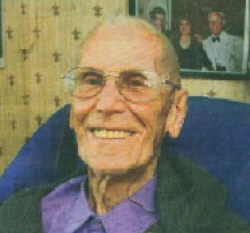
This Month's Internet Feature
This and That on the Somme
Art Exhibit Honors Footballer at the Somme
Then and Now Tour of the Somme Slide Show
The German View of the Battle
BBC & Readers Rethink the Somme
Irish battle of Somme stamp is first to mark British military past.
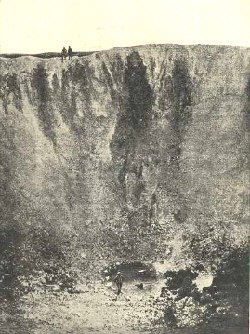
Lochnagar Mine Crater at the Somme Afterwards
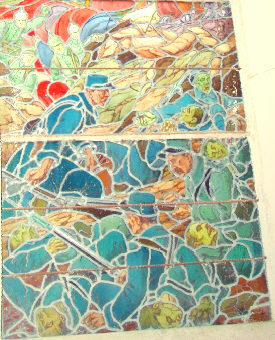
Section, Stained Glass Window Village Church, Marbotte France (St. Mihiel Sector). The Church had Served as a French Morgue and Field Hospital.
New at the Websites of the Great War Society and Our Friends
Click on Title to Access
|
|
At Great War Society Sites
At the WFA-USA
|

| Contrary to many sources, including books and websites, the first shot in anger by the United States in World War I was not fired by an artillery piece on the Western Front. It was a warning shot fired by the Navy's USS Supply [formerly Illinois] before the interred German Raider Cormoran at Guam on April 7, 1917. (article) The German captain immediately scuttled his ship losing a number of his crew in the process. |
|

Memorable Event
|
First Day on the Somme
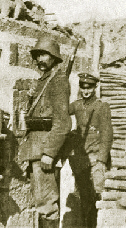
German Officer and Sentry Await Attack at the Somme
July 1, 1916
Click on Image for More Information from the Imperial War Museum
|
|
GREAT WAR 2006 EVENT CALENDAR
|
Verdun and Somme
90th Commemorative Events
Comprehensive Double Calendar
Scheduled Throughout 2006 (link)
|
WFA-USA Florida Gulf Chapter Seminar
Hilton Garden Inn, Tampa North
August 16 (link)
|
WFA-USA Great Lakes Chapter Seminar
Cleveland Gray's Armory
October 21st (link)
|
Representations of the Other in American and
German Literature and Film
on World War I
UCLA, October 12-14, 2006
Los Angeles, CA (email for details)
|
WFA-USA New York/New England Chapter Seminar
Hartford, Connecticut
November 11th
(Program)
|
Armistice Day and the Great War Society
An International View of the Great War With our Friends Jean- Pierre & Cecile Mouraux
Sonoma, California
Check back for Details
November 11th
|
Send additions/corrections:
Email Response
|
New WWI Aviation Film - Flyboys: Directed by Great War Society Member Tony Bill and starring French actor Jean Reno and American James Franco, this Franco-American production fictionalizes the story of the Lafayette Escadrille and is due for release in October 2006. The 38 young American volunteers of the Lafayette Escadrille are credited with some 57 German aircraft before American entered the war in April 1917.
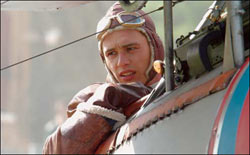
Scene from the Film
The film features flying reproductions of several famous WWI aircraft including five Neuport 17s, a Sopwith One-and-a-Half Strutter, a Bristol F-2, a Royal Aircraft Factory SE-5a. a Bleriot XI, and two Fokker DR-1 triplanes. The film (color, 139 minuets) makes use of full-size nonflying mockups of WWI aircraft, and computer generated graphics for dogfights and scenes of wartime Paris. Outdoor scenes were filmed in rural England on terrain judged similar to that of Chaudun where the Lafayette Escadrille was stationed in France. Flyboys was the subject of an article in the July edition of Smithsonian Air & Apace magazine. More information is available on the web using your search engine to search by title. From LS.
|
Special Section: The Somme July 1st
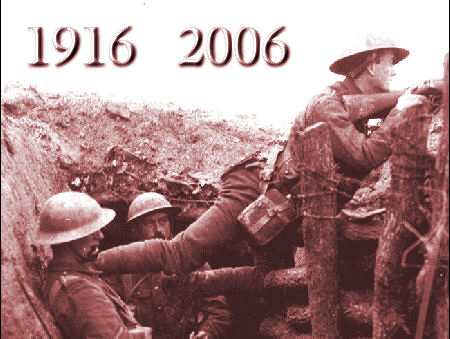
|
|
World War I Headlines
in the
21st Century
|
|
In the Third Wave at Gommecourt
0730 and 45 seconds, July 1, 1916
The scene that met my eyes as I stood on the parapet of our trench for that one second is almost indescribable. Just in front the ground was pitted by innumerable shell-holes. More holes opened suddenly every now and then. Here and there a few bodies lay about. Farther away, before our front line and in No Man's Land, lay more. In the smoke one could distinguish the second line advancing. One man after another fell down in a seemingly natural manner, and the wave melted away.
[Advancing] A continuous hissing noise all around one, like a railway engine letting off steam, signified that the German machine-gunners had become aware of our advance. I nearly trod on a motionless form. It lay in a natural position, but the ashen face and fixed, fearful eyes told me that the man had just fallen. I did not recognize him then. I remember him now. He was one of my own platoon.
Lt. Edward J. Liveing,
County of London Battalion
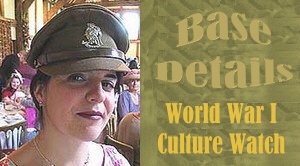 |
Anniversary
By Dr. Esther MacCallum-Stewart
|
Every Englishman has a picture of the Somme in his mind, and I will not try to enlarge it.
(Herbert: The Secret Battle)
On the anniversary of the Battle of the Somme it perhaps seems strange to ask whether it is at last time to leave this battle in the dust (not mud: the Somme had chalky soil and therefore afforded better drainage). Yet for many years, the Somme has been the premier battle through which readers have found connection to the war, and even then it is the first day, the first set of casualties, the first to enlist that are highlighted.
The literature of 1 July 1916 is endless. Salutary at first, a proper corrective to the streams of propaganda claptrap about "laughing heroes" and "the Great Adventure" which had previously gushed forth, after a time it developed into a most mischievous mythology.
John Terraine The Smoke and the Fire
In Richard Holmes' The Western Front the author comments ironically that the Western Front, and most specifically the Battle of the Somme, is seen by the majority of readers as not only the definitive battle of the war, but also a shallow attempt by General Haig to 'move his drinks cabinet 10 metres closer to Berlin', a quote taken from Richard Curtis and Ben Elton's Blackadder Goes Forth. This act of bloodshed and pointless slaughter is seen as the ultimate representation not only of World War One, but also war's futility in general.
So many people have written descriptions of trench life in France; there have been so many poems, plays and speeches about it that the majority of our nation must have a much clearer picture of life on the Western Front than they have of life at the Savoy, or life in East Ham.
(Herbert: The Secret Battle)
Why do we love the war so much, and specifically, why Somme? Situated in the approximate centre of the war, the Battle of the Somme now goes a long way to defining all of our cultural baggage about the war. In today's age where opposition to war is seen as a natural social response, the battle epitomises all that can go wrong. At the same time it is the point at which the innocence of an era is lost, and the real men start to come home with their eyes opened:
Idealism perished on the Somme.
(Taylor, The First World War Illustrated)
It is ironic that modern fiction is almost totally responsible for this representation. The war writers of the 1930s did not really focus on the Somme, although many of them served there, and their joint descriptions of this battle have helped to cement it in the public mind. Blunden speaks of the Battle in a diffracted manner, and his descriptions focus more on Thiepval Wood:
South of the Ancre was a broad-backed high ground, and on that ground a black vapour of smoke and naked tree trunks or charcoal, an apparition which I found was called Thiepval Wood. The Somme indeed!
In more recent fiction however, the Somme takes precedence over the narrative. Sebastian Faulk's Birdsong (1993) devotes exactly 100 pages to a description of the battle, and for Susan Hill in Strange Meeting (1971), Somme has become so definitive that she does not even need to name the battle to explain why John Hilliard is so disillusioned:
Since going to the front in April, he had found out so many things. . .He was wounded during the second week of the offensive, in July.
(Hill)
The Somme, it seems, has a perverse romanticism. The death toll and the perception that mainly young, naïve soldiers fresh from Britain died in their droves gives it an alluring nature somewhat akin to drivers slowing down to watch pile-ups on the other side of the motorway. A macabre aspect of human nature perhaps, but a distasteful one, I feel. The makers of the television programme The Great War, who wanted to show that the battle took huge casualties but was a success, and completely failed to do this:
The romantic and tragic elements of the Kitchener Army and its fate in the summer of 1916 means that not even The Great War could stop the Somme being the British byword for futility.
(Emma Mahoney)
Whilst I feel very strongly that respect for those who fought should remain, I also feel it is time to move further afield. More recently, popular authors have tried to move away from the Battle of the Somme, looking at the roles of women, the 'sideshows', the civilians and other parts of the Western Front. For the people living at the time, 3rd Ypres became the more important battle, perhaps for the simple reason that it came later on. It is, I believe, a mistake to see Somme as the ultimate expression of the war, and worse to only look at the first day. There is so much more to see, and so many more voices that deserve to be listened to.
Dr. Esther MacCallum-Stewart is a researcher at the University of Sussex and runs our favorite First World War weblog Break of Day in the Trenches.
Click on the icon below to visit her site.

|
|
 |
Reading About the Somme
Len Shurtleff of Len's Bookshelf
Gives His Recommendations.
|
Mike, I recommend the following to the Trip-Wire subscribers. If readers are interested in a detailed treatment of the individual Somme engagements, the Pen & Sword Battleground Europe series of battlefield guides is highly recommended.
The First Day on the Somme, Martin Middlebrook, Penguin, 2003, 365 pages, paperback. First published in 1971, this work -- a near classic -- has sustained its value as a first-class analysis of the opening phase of the battle, the day when the attacking British Expeditionary Force sustained 57 thousand killed, wounded and captured.
The Somme, Robin Pryor & Trevor Wilson, Yale, 2005, 352 pages hardcover. Written by two established Australian historians, this book offers a fresh analysis of the entire battle from July to November 1916.
The German Army on the Somme, Jack Sheldon, Pen & Sword, 2005, 352 pages. A rare work in English drawing on German sources to analyze the this massive engagement, which, despite its seemingly indecisive result obliged Imperial German Army to shorten its front by some 50 kilometers, withdrawing to the Sigfried Stellung in early 1917.
And, two memoires:
The Old Front Line, John Masefield, Pen & Sword, 2003, 128 pages, paperback. Still in print after nearly 90 years, England's poet laureate writes of his of his wartime experiences on the Somme.
Twelve Days on the Somme: a Memoir of the Trenches, Sidney Rogerson, Greenhill/MBI, 2006, 172 pages + xxviii pages, cloth. Memoirs first published in 1933 of a British subaltern who found both honor and comradeship in the last days of the Somme battles.
|
|
|
Page Two
|
|
|
2006 Western Front Battlefield Tour
Photo Album
By Gary Van Loon
|
Member Gary Van Loon volunteered to be the "official" group photographer for our recent Western Front Tour. He did a great job for us. Here are some of our favorite shots. Click on the thumbnail to see the large format photo and on your browser's "back" button to return here.
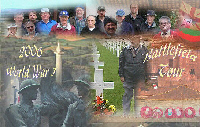
Tour Montage |
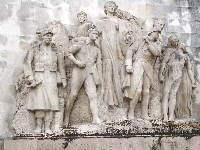
French Army Memorial, Paris,
Near Trocadero |
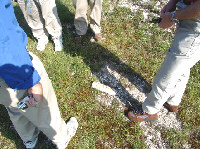
Shell Discovered By Group at Navarin Farm, Champagne |

Gary Compares French & German Trenches at Bois Brulé |
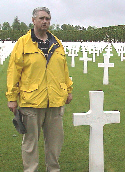
Trip-Wire Editor
Mike Hanlon at
Eddie Grant's Grave,
Argonne Cemetery
|

Fort Troyon, River Meuse [Played Critical Role in First Battle of the Marne] |
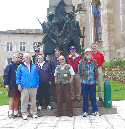
The Group at Thiacourt
St. Mihiel Sector | 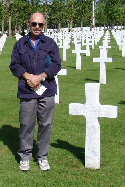
Michael Harwood Read Rouge Bouquet at
Joyce Kilmer's Grave, Oise-Aisne Cemetery |
Click her if you would like information on next year's trip. (email)
|
Verdun
July 1916:
Stalemate and the Beginning of the End |
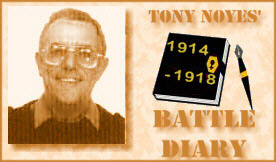
|
The Somme
July 1 1916,
Over the Top
|
The start date for the joint operation in the Somme region had been brought forward from August at the anxious request of Joffre but that action had little immediate effect on the continuing horrific events at Verdun. On July 11th, the Germans struck again. Again the assault troops crossed the evil Fleury road and advanced into the wilderness beyond their struggling front line. Again they came under fire from their flanks on the Froidterre ridge, from the guns round Fort Souville and from the French forces on the left bank of the River Meuse.
Over the next two days their attack faltered and finally stopped after valiant fighting by both sides at the Poudriere and a French position called "the Crab" in the valley below Fort Souville and below Fleury village. A small group of German soldiers reached the roof of Fort Souville and for fleeting minutes, German commanders to the rear thought that the Fort might have been taken.
It hadn't, and the men were quickly driven back, killed or captured by the French garrison. This was the end of Falkenhayn's grand plan to smash the French Army at Verdun. Unfortunately, neither of the adversaries could accept or realise this, and fighting continued unabated throughout the long hot summer. The names of Fleury and Thiaumont reverberate through the unit reports into August as each side continued to try for an impossible advantage.
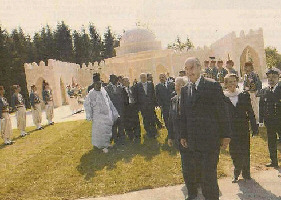
President Chirac Dedicates the Monument
to the Moslem Soldiers Who Fell at Verdun,
June 24, 2006
These tragic events would now begin to be overshadowed by the Battle of the Somme. Falkenhayn was forced to instruct that a stop now be ordered to the assault efforts of the German forces, and that ground should be held -- "but not at all costs." Withdrawals were now allowed after a proper defence had been carried out. Unfortunately, the complexity and small fighting area between these two points made this a very difficult instruction to follow.
|
The initial assault at the Somme, begun at 0730, was a ghastly race between heavily laden soldiers walking over overgrown ground and enemy machine gunners. They needed to cover two or three hundred yards before they got to the German trenches, and German soldiers racing up from their dugouts needed to get their guns into action before the British arrived.
On the British front, and with few exceptions, the Germans won.
The shelling had not touched the Germans in their underground "stollen", although it had caused them severe discomfort, and they were now able to take revenge on the long straight lines of infantry advancing steadily across the weed covered fields. Often the shelling had not destroyed the barbed wire which lay hidden in the long grass and weeds and the infantry had to search for any openings they could find.
German shelling fell across No Mans Land stopping subsequent reserves crossing this blighted land and the leading waves were decimated by unending and constant small arms fire. Within ten minutes the 120,0000 men in the first waves had taken what cover they could cover, and by the end of the day nearly 20,000 would be dead. They had lost the race by probably no more than five minutes at the most.
Except at Montauban at the East end of the line and near Mametz Village the army was pinned down and taking cover in shell holes and undulations in the ground. The wounded lay where they had fallen the German snipers using them for target practice, and the contorted dead lay where the traversing machine guns had caught them. The assault on this day was over, losses were approaching 60,000 men.
To its absolute credit, the Army carried on. Gradually, the trenches jammed with the wounded and dead were cleared, the remains of the shattered units withdrawn, new ones sent up in their place, and the battle ground on.
Every village and every wood was fortified along the old front line, and as the British remorselessly attacked each place, the next ones to the rear were also strongly fortified. The battlefield became similar to a huge chess board of interlocking strong points, each to be assaulted with its neighbour and taken after massive artillery bombardments followed by incessant infantry attacks.
The adventure of the "New Armies" had become a nightmare. A nightmare that was to continue for 141 days.
|
If you would like to visit these fields of memory for a detailed tour, please email Tony Noyes or Christina Holstein to discuss your requirements without obligation.
|
|
|
Page Three
|

|
Chautauqua Women In World War I
From Margaret Haas, GWS Member
|
The renowned Chautauqua Institution was founded in 1874 by Lewis Miller, an Akron, OH, inventor and manufacturer; and John Heyl Vincent, a Methodist minister (later bishop). Since its founding, the Institution has become a mecca for art, music, opera, theater, sports. education and religion during July and August.
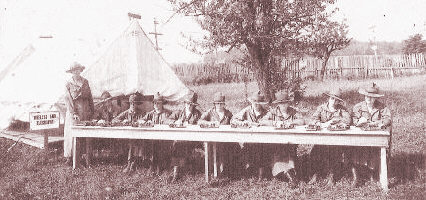
Registration Desk at Chautauqua
After the United States entered World War I, Chautauquans prepared for their first summer season of the war. The Institution President Arthur Bestor asked "Has Chautauqua a part to play in the National crisis?" It did. Officers of the Institution soon joined in the manual of arms drill practicing with dummies. During the 1917 season, women were seen in an unprecedented role as they marched in formation on the grounds in uniforms of white blouses, white tennis shoes and khaki skirts, as they prepared themselves for national defense.
Throughout the Country during the war, women were leaving the confines of their homes, entering the work force once dominated by men. Such was happening at Chautauqua as women began serving in war related programs. Many of the Domination Houses were given over to the American Red Cross.
These women were recognized in July 1918. The week beginning the 15th was "Women's Service women week." Women were billeted in tents in on the encampment grounds. In military tradition there day was comprised of Reveille at 6am, Military Calisthenics, Colors, Sick Call, Inspection and
Classes in food conservation, first aid, dietetics, Telegraphy, surgical dressing, typewriting and Braille. Taps was at 10pm.
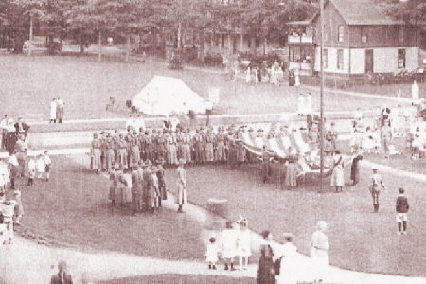
Military Tattoo, Chautauqua Style
In this pastoral setting, Women of Chautauqua were caught up in the universal flood of patriotism which ran with the current the engulfed the Country.
|

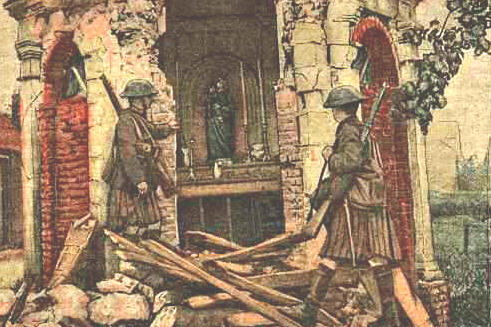
Scottish Troops Examining a Damaged Village Chapel
Click Here to Visit War in a Different Light
|
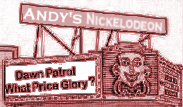 |
James Whale
Great War Veteran
Director of Classic Films
By Andrew Melomet
|
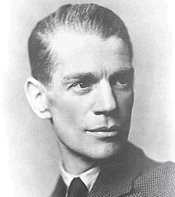
James Whale |
James Whale (1889-1957), the noted film director, was born to working-class parents in Dudley in Worcestershire, England. He had studied art at the Dudley School of the Arts and Crafts and was working as a cartoonist when war broke out. He resisted enlisting and involved himself in volunteer work. He became a camp worker for the YMCA and was assigned to the Whittington Barracks at Lichfield. Whale found himself labeled a "shirker" and enlisted at the age of 26. He was considered a candidate for officer training. In October 1915 he joined the "Inns of Court" cadet corps, assigned to the 2/7th Battalion of the Worcestershire Infantry Regiment. He was sent to Bristol as an officer cadet and in the summer of 1916 he was commissioned a Second Lieutenant in the Seventh Worcester Infantry Regiment.
In Flanders, the 2/7th met with heavy resistance while on a raid against enemy trenches at Port Arthur. Whale's battalion marched westward to a training area near Wavans where they prepared to take part in the fighting on the Somme River. The 2/7th arrived just days before the end of the battle and the Fifth Army came to a standstill as the weather made further action impossible. Whale was part of the British forces that settled down for the winter, holding the line and training for the spring offensive. The winter of 1916-1917 was very wet and cold. The Western front was drenched with heavy rains and no major offensives occurred. On New Year's Day, the first shots of 1917 were fired from the trenches by the 2/7th on the heights above Grand Court. By February the Germans withdrew some 30 miles from the Somme to a new trench system the Allies called, "The Hindenburg Line."
On July 11th, the 1917 Flanders campaign started and continued for the next three months. The 2/7th came forward on August 15th and moved up. Whale's commander, Lt. Colonel L.C. Dorman established headquarters at Pommern Castle. On the line northeast of the castle, Somme Farm and Hindu Cott had been captured by the British but Aisne Farm in between was still in enemy hands. The first attack on Aisne Farm occurred on the night of August 24th, 1917 but was repelled. The second attack on the 25th was part of a broader assault that included the Schuler and Gallipoli Farms to the east. Whale and a platoon of "A" Company crawled through the barbed wire and fought their way in. According to Whale, "My platoon had been told to do a stunt on a pillbox at midnight, and we had gone straight into a well-laid trap." Four men were killed, while Whale and two others were taken prisoner. "It all happened so suddenly, I was stupefied and found it impossible to believe myself cut off from everything British and in their hands." Whale was processed in a sorting camp at Karlsruhe, then moved to Holzminden in Brunswick where he would spend the remaining 15 months of the war. Often an attendee of the theatre, it was after being captured by the Germans that he became involved in theatrical performances as a POW. He also passed the time doing charcoal portrait sketches and playing bridge. He won about 4,000 Pounds and cashed in the IOUs when back in England.
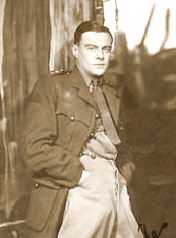
Colin Clive
Capt. Stanhope in the
1929 Journey's End |
After the war Whale worked in various repertory theatre companies as a man-of-all-work. He played small parts, designed and painted scenery and occasionally was a stage manager. In 1928 he was approached by playwright R.C. Sherriff to put on Journey's End, which had been rejected by all the major producers. The play was a major success in London and was also produced in New York. Whale was approached by Tiffany Studios to direct the film version. While contract negotiations took place, Whale learned about film directing by working as a dialogue director for Paramount's The Love Doctor. He also found the time to work with Howard Hughes as dialogue director for Hell's Angels.
In Journey's End, Whale was faced with a difficult task, he needed to retain the dramatic impact of the original talky and static stage play yet at the same time he wanted to use the inherent power of cinematic techniques to enhance the dramatic experience. He succeeded and Journey's End was a major critical and commercial success . Some of Whale's distinctive directing flourishes are found in Journey's End- introducing characters in darkness or delaying their entrances and building up interest in the unseen characters through dialogue and then having them casually appear, providing a surprise anticlimactic jolt. Whale also uses lateral tracking shots in the battle scenes which predate their use in All Quiet In The Western Front.
With the film version of Journey's End (1929) a success despite the primitive sound recording then available, Whale was put under contract at Universal Pictures. His first picture was Waterloo Bridge (1931), a Great War romantic tragedy about a love affair between a London prostitute and a soldier. With the success of Waterloo Bridge Whale was given his choice of projects. He selected Frankenstein. Whale later said "It was the strongest meat and gave me a chance to dabble in the macabre. I thought it would be amusing to try...." Frankenstein was one of the most successful films of the decade. The post-World War One period saw the rise of horror films as a very profitable genre for Hollywood. A case can be made this was due to the many disfigured veterans who survived the war. The public's interest in disfigurement was often reflected in the horror films of the time. And the dark gallows humor that evolved during the years of trench warfare was reflected in the black comic overtones in Whale's film work.
Between 1931 and 1935 Whale directed four of the best horror films ever made, Frankenstein (1931), The Old Dark House (1932), The Invisible Man (1933), and The Bride Of Frankenstein (1935). His friend, R.C. Sherriff wrote the scripts for The Old Dark House and The Invisible Man. The Bride Of Frankenstein is considered the best of the original Frankenstein trilogy and features Whale's sardonic wit at its height. In addition to the horror films, Whale also directed other more conventional pictures, By Candlelight (1933), A Kiss Before The Mirror (1933), One More River (1934) and Remember Last Night (1935).
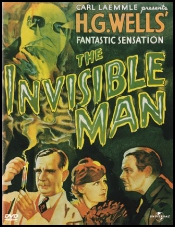
Another Sherriff-Whale
Collaboration |
In 1936 he directed what many consider the best filmed version of Jerome Kern's Showboat, starring Irene Dunne, Allan Jones, Charles Winninger, Paul Robeson and Helen Morgan. Whale's career at Universal had been guided and supported by Carl Laemmle Jr, .but in 1936 the studio was sold and Whale would suffer without Laemmle's protection. Whale's next project was The Road Back (1937) Erich Maria Remarque's sequel to All Quiet On The Western Front. The Road Back focused on the efforts of German veterans to adjust to the civilian postwar world and the choice of anarchy or authoritarian order. Whale exhibited some odd behavior while directing The Road Back, he wore the uniform of a German officer and his camera crew was dressed of lesser ranks. George Gyssling, the German consul in Los Angeles warned all the leading cast members, the technical staff and the current Universal Studios executives that if the film continued in production, all the films they were associated could be banned from Germany. According to actor Larry Blake, Whale's reaction was simple. He said "F**k those Germans!" But, the new studio heads were afraid of losing Germany, a major market for overseas sales. They recut the film without Whale's input and added some comic sequences. According to Variety, the cuts had been made to "cultivate the good will of Germany." The film found itself banned in Germany, Greece, China and Brazil. Although the film was a box office success in the United States, the stigma of failure became attached to it and to Whale's reputation. Ironically, in 1939 The Road Back was re-released with an anti-Nazi narration.
Whale continued working in Hollywood and some of his later pictures are of particular interest, The Great Garrick (1937), The Man In The Iron Mask (1939) and Green Hell (1940). In 1941 he walked off the set of They Dare Not Love which was finished by Charles Vidor, In 1949 he directed an interesting short experimental film in the expressionistic style, Hello Out There starring Henry "Harry" Morgan. After leaving film directing behind Whale directed plays, painted and did set design. He was financially well off with investments in real estate. On May 29th, 1957 he was found drowned in his swimming pool.
For years, Whale's reputation was based solely on his horror films and he was written off as a mere horror film director. Then, in the 1970s, a new interest in his work was sparked by noted film historian, William K. Everson with an article on Journey's End in the May 1975 issue of Film In Review. Shortly, Everson would teach a graduate course on James Whale at the New York University Cinema Studies Program. From June 1977 to January, 1978 the New York Museum Of Modern Art ran a retrospective series, Universal Pictures 65 Years, that presented many of Whales features to the public for the first time in decades. With the availability of VCRs, tapes were soon circulating of Whale's titles and now of course many of his titles air regularly on Turner Classic Movies and are available in restored prints on DVD. His last days are the subject of the Academy Award-winning movie, Gods And Monsters (1998). I highly recommend the Gods And Monsters DVD from Universal Studios. It masterfully depicts a man still haunted 40 years later by his experiences in The Great War.
Andrew Melomet, Proprietor of Andy's Nickelodeon will answer your Great War film or video inquiry. He is also soliciting your recommendations for the WWI Filmography he is compiling for our readers. Just click HERE.
|
|
| The following are thanked for their contributions to this issue of the Trip Wire:Gary Van Loon, Jackie Winspear, Edith & Nicoll Galbraith, Sidney Clark, Christina Holstein, Bob Denison, Bob Ford, Tony Noyes, Esther MacCallum-Stewart, Andy Melomet, Len Shurtleff. Until next month, your editor, Mike Hanlon. |
|






























